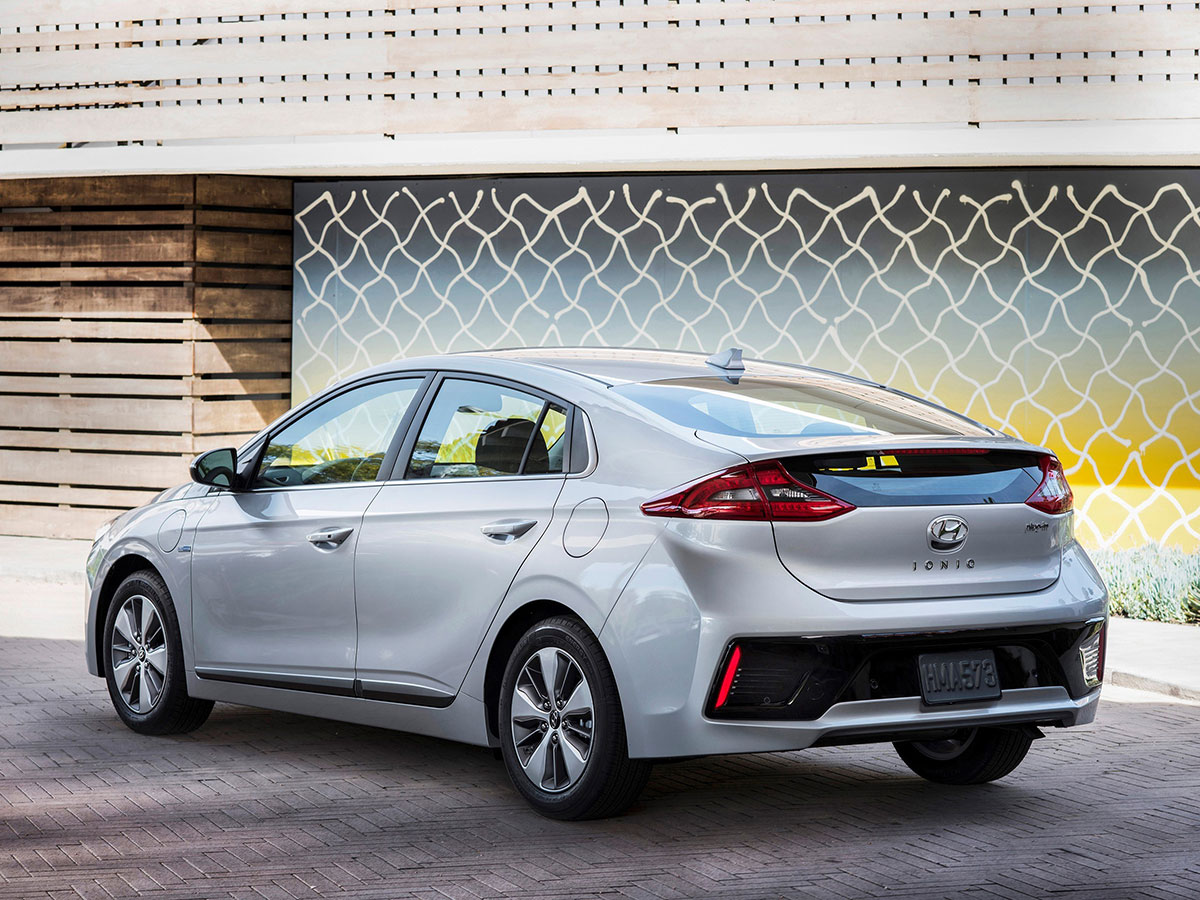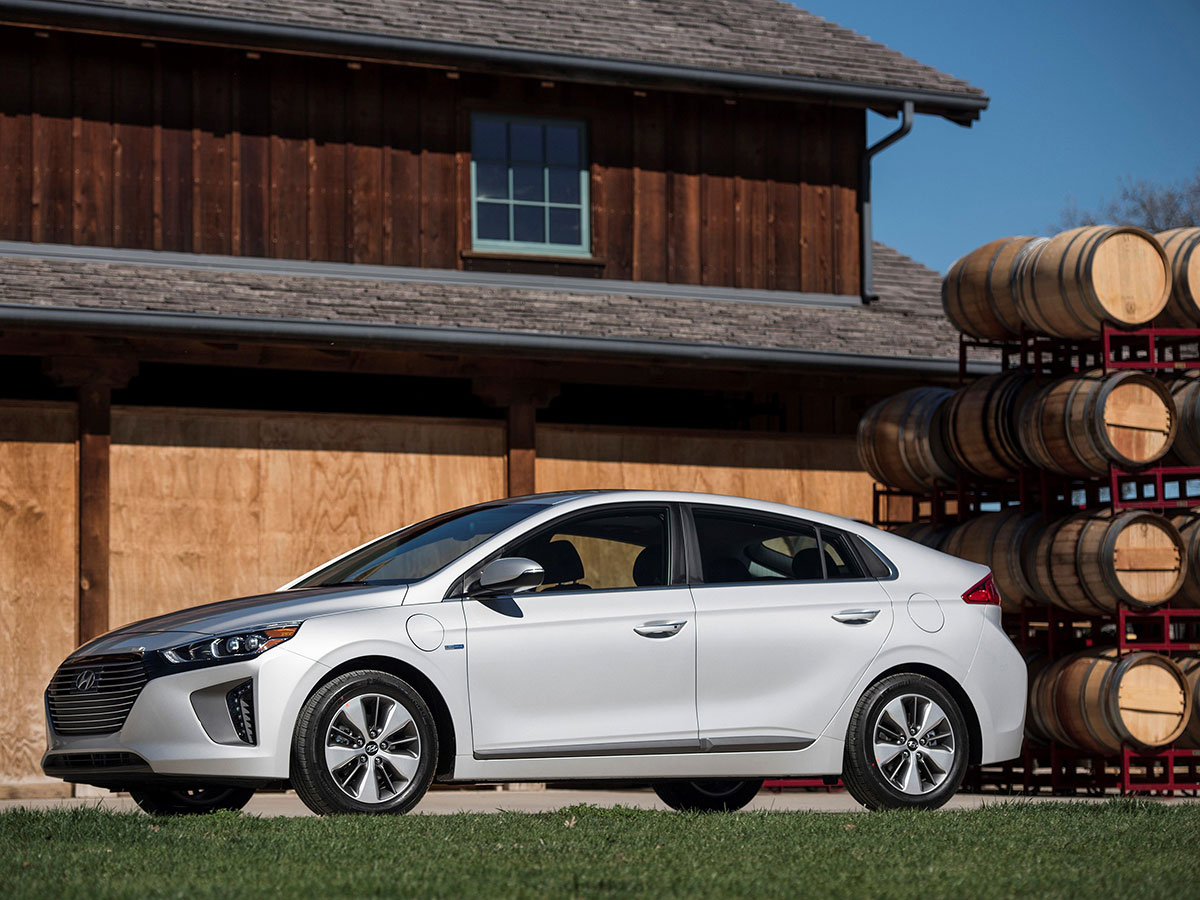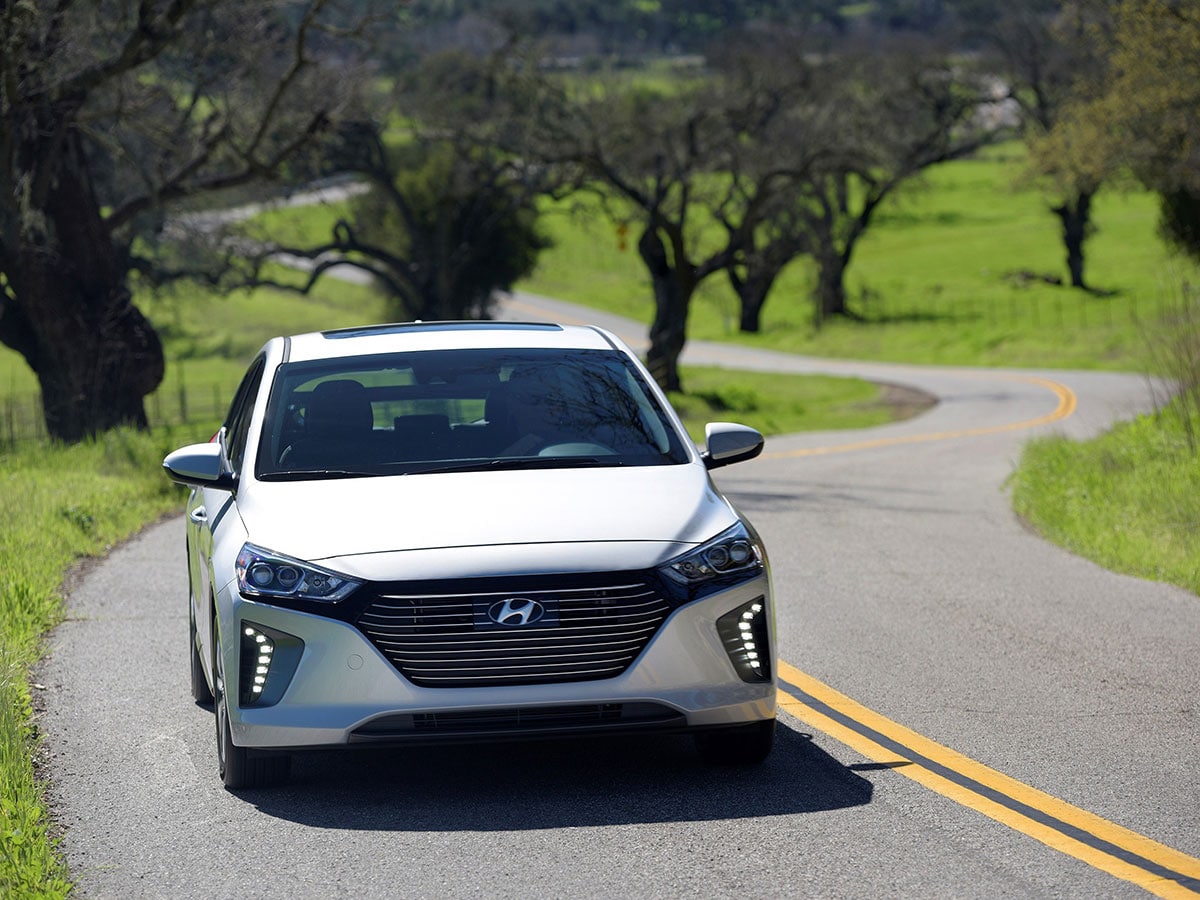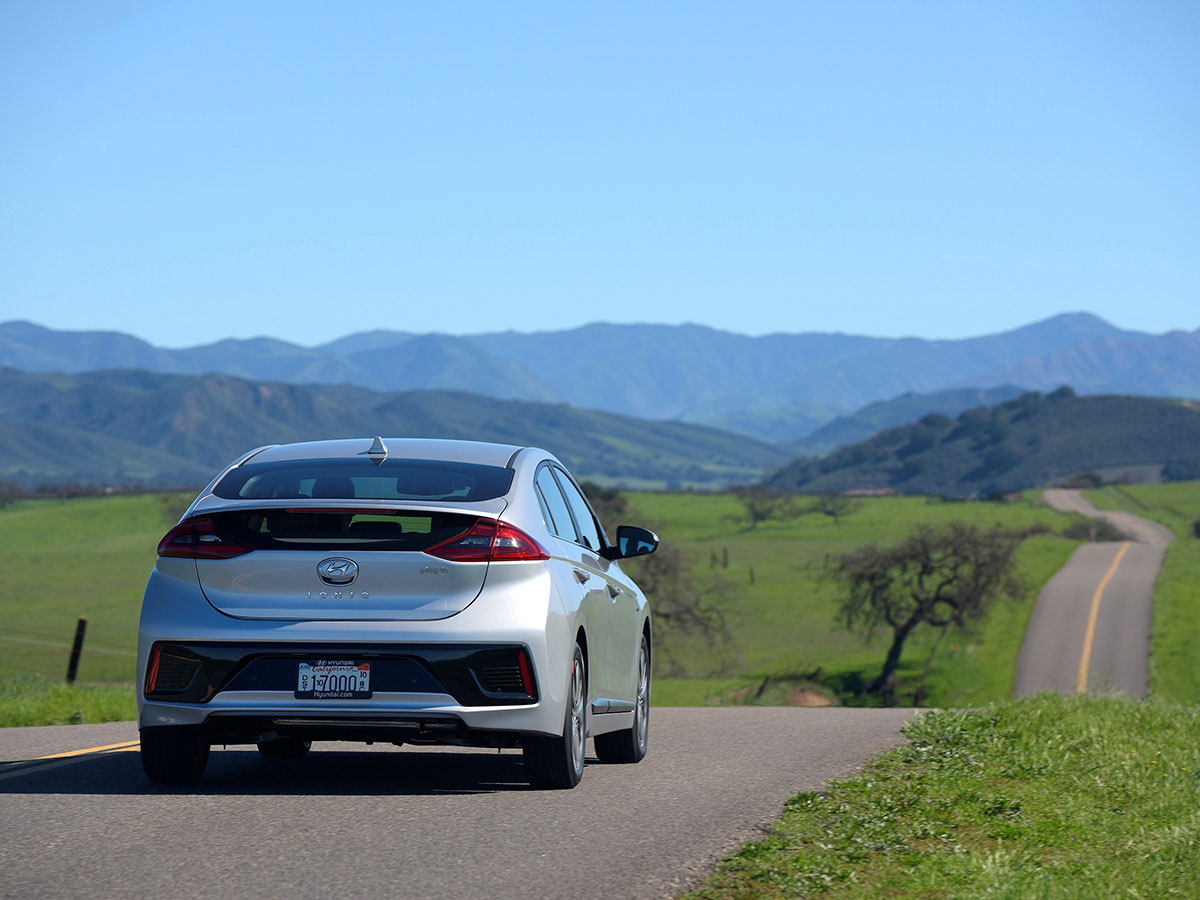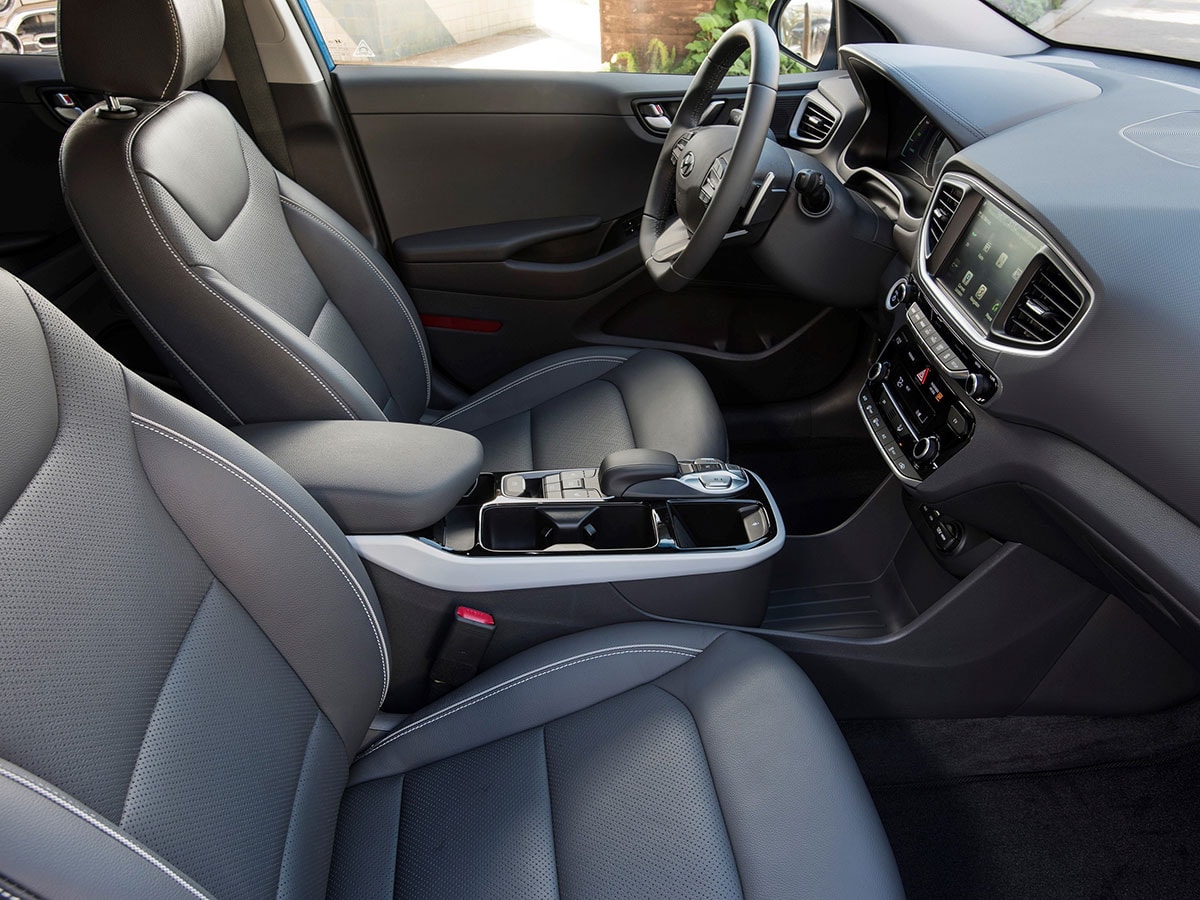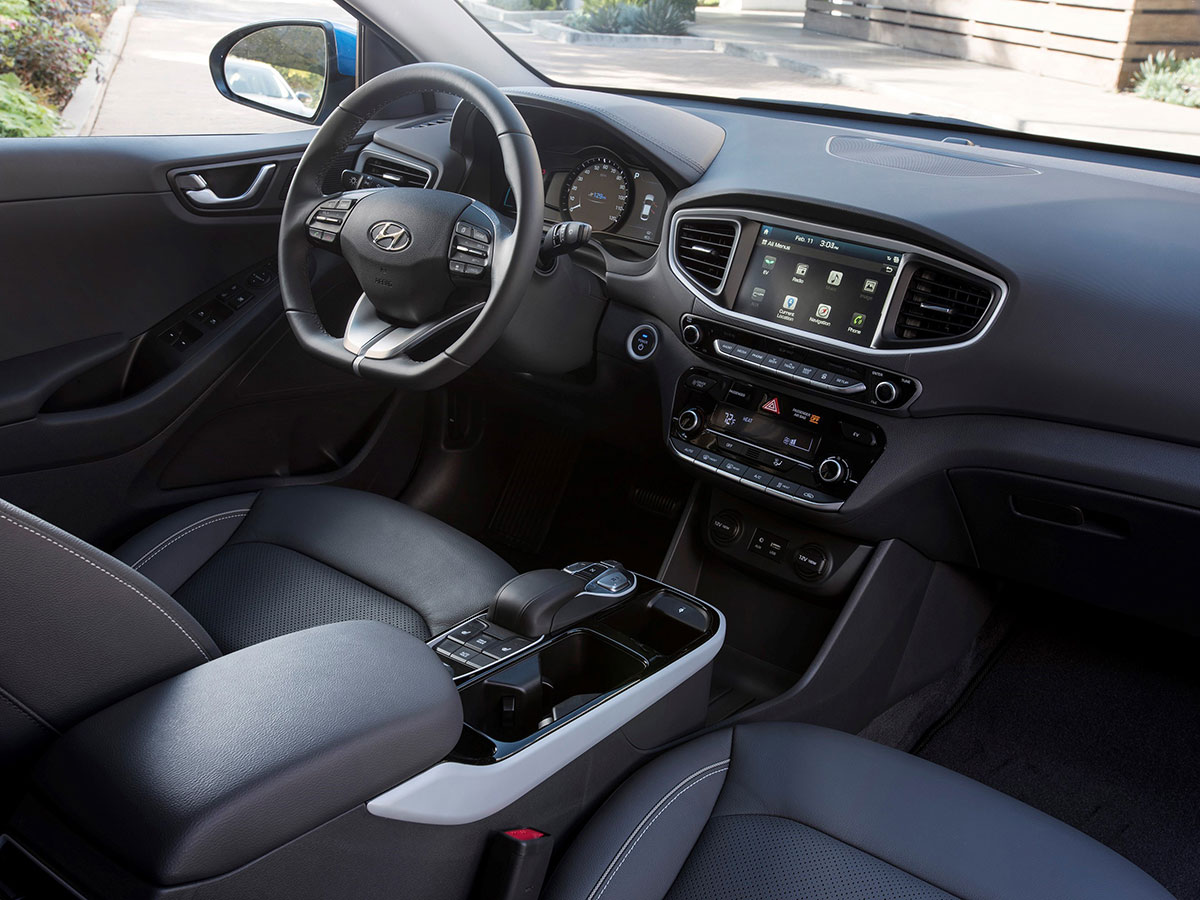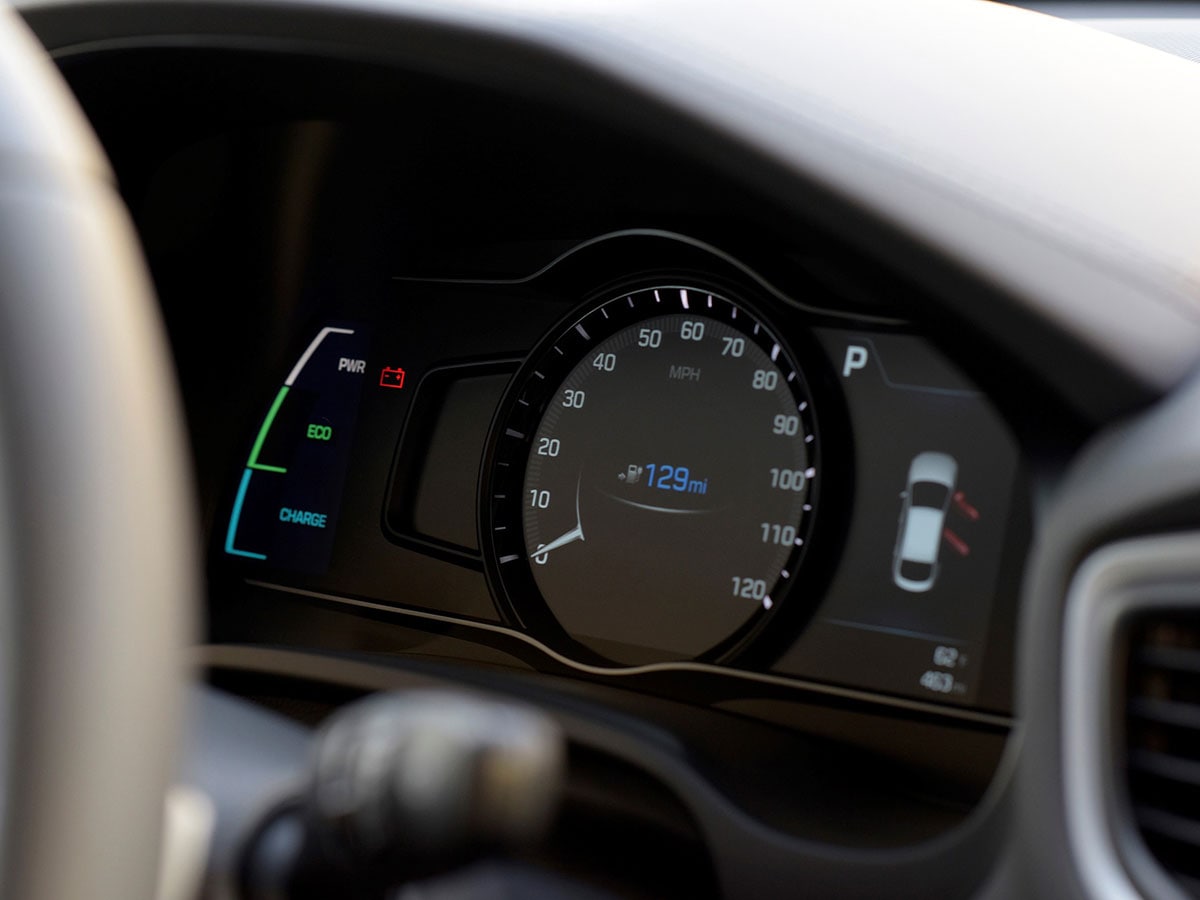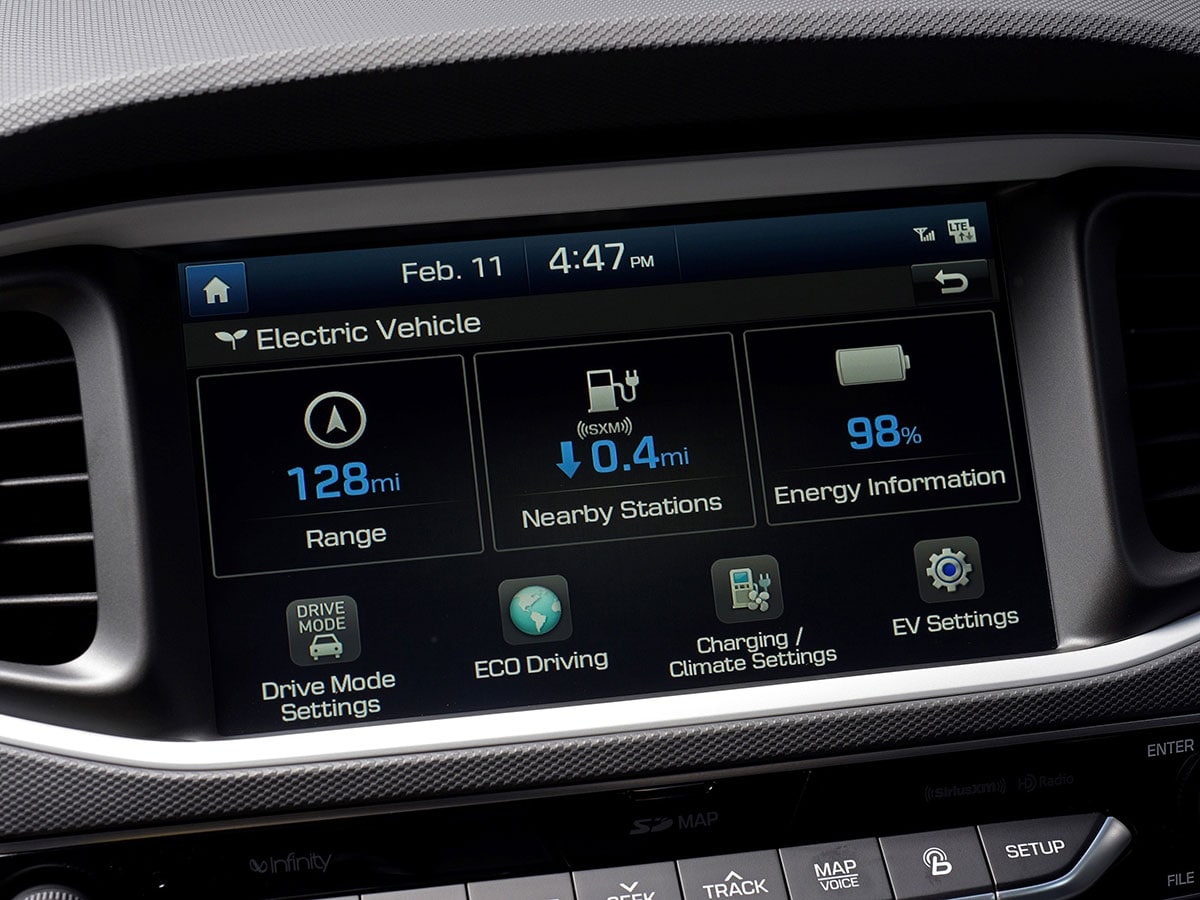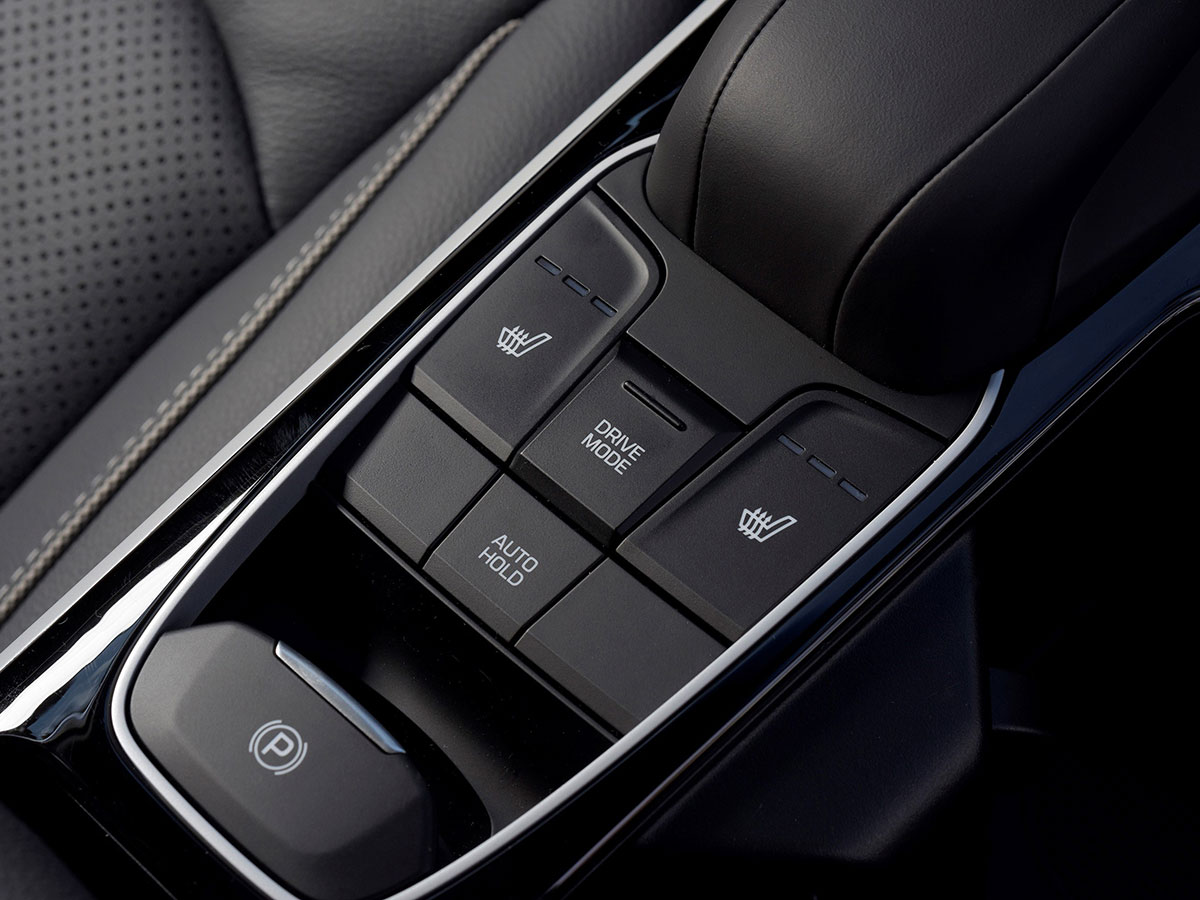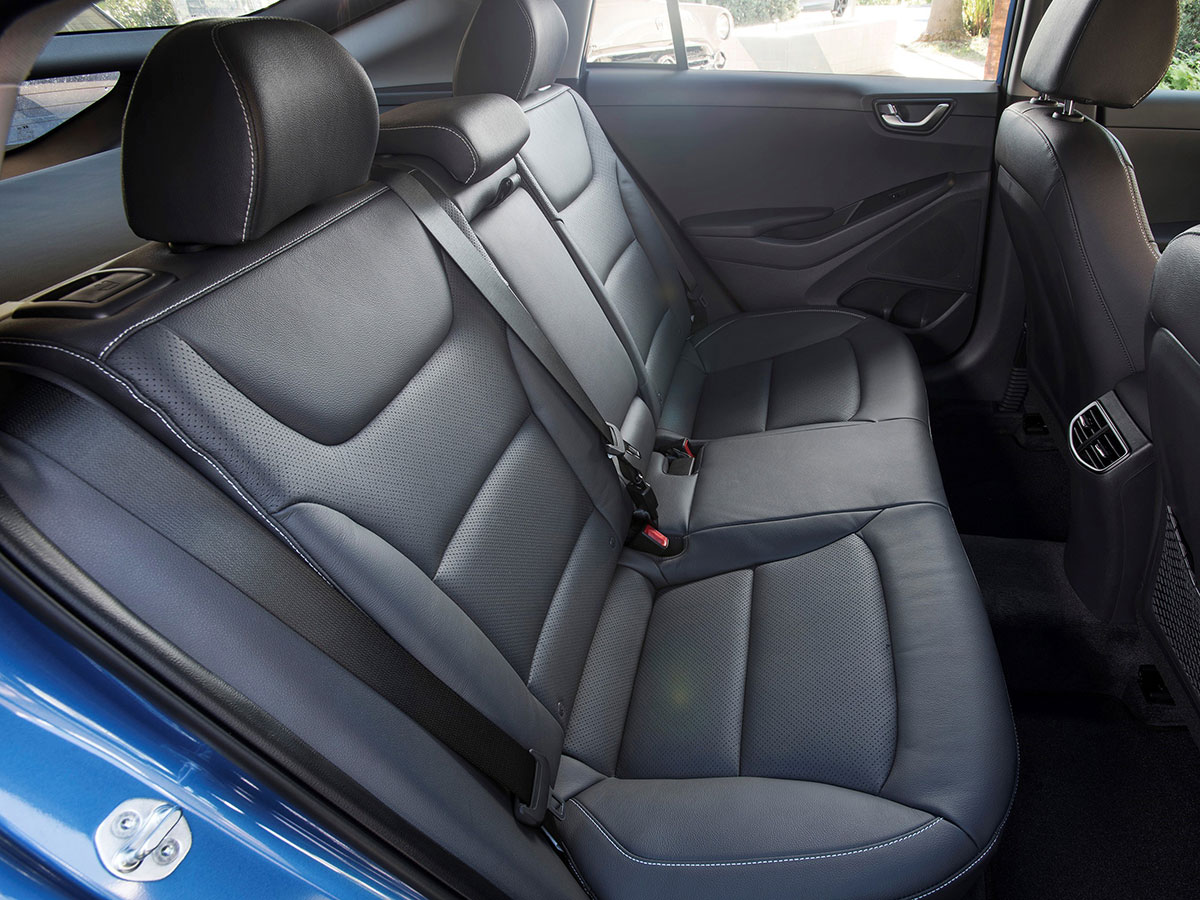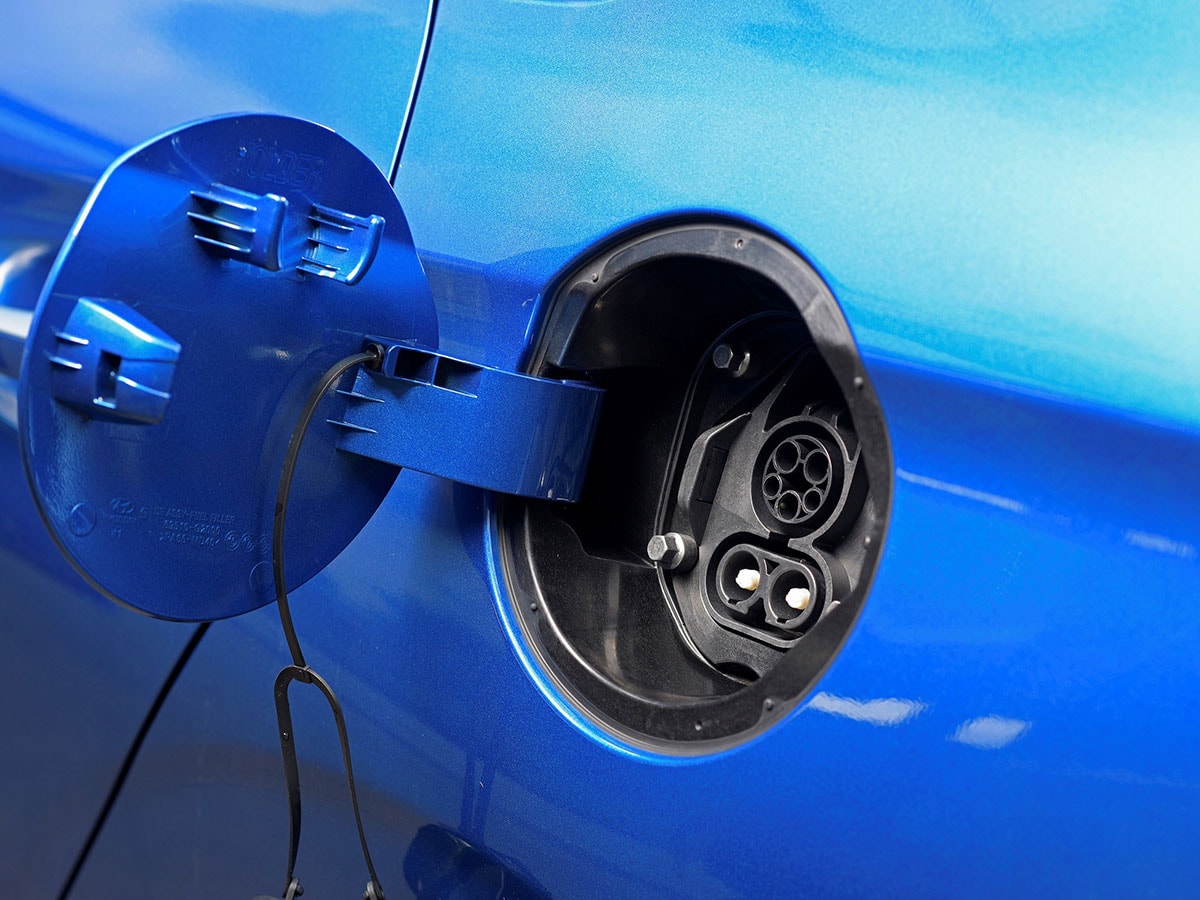
Starting Price: $25,835
Net power: 139 horsepower
Total range (gasoline/electric): 630 miles
Electric-only range: 29 miles
EPA fuel economy (city/highway combined): 52 mpg
The plug-in hybrid value statement
The 2018 Hyundai Ioniq Plug-In Hybrid stands tall as the most everyday car in this test. Far from a slight or a compliment served cold, we mean that as an enthusiastic endorsement. From a practical plug-in-hybrid point of view, the gasoline/electric PHEV version of the Ioniq got fan notes from every driver in our test.
We universally agreed that for a 5-passenger hybrid hatchback that starts at just $25,835, the Ioniq had an inside line when it came to value. Standard features at that price include body-color exterior trim pieces — including heated outside mirrors — and a gift basket of interior features like heated front seats, a rearview camera, and dual-zone climate control. For the media junkies, a 7-inch touch-screen display and Apple CarPlay/Android Auto are also included. Throw in a $4,500 federal tax credit and a 10-year/100,000-mile warranty on the hybrid powertrain, and you’ve already got a pretty good lock on value.
Real live value
When you move up to the driving benefits, the Ioniq’s long value plays even longer. Hyundai says that the Ioniq will deliver 52 mpg and up to 630 miles of total range if you’ve got a full tank of gas (11.4 gallons) and a full battery charge. While we didn’t match those other-worldly numbers on our comparison test, we did get close enough to brag.
For power, the Ioniq Plug-In Hybrid uses a 1.6-liter 4-cylinder rated at 104 horsepower combined with a 60-horsepower motor. The system’s net total of 139 horsepower is very usable around town, but be advised that while Sport mode adds spirit to the Ioniq at 50 mph and below, it’s not much help for strong passing at highway speeds. Worth noting: A 6-speed automatic transmission sends the Ioniq’s power neatly to its front wheels, whereas most other hybrids employ continuously variable transmissions which have a reputation for good fuel economy but mediocre acceleration.
Is it a hassle to take advantage of the plug-in power? Nope. The Hyundai Ioniq Plug-In Hybrid will fully charge overnight on a normal 120-volt wall plug and — if you stay within speed limits — give you at least the 29 miles of all electric range that you’ve been promised by the EPA. And when you use that electricity up, you can stay fearless knowing that the gasoline engine will deliver you anywhere you want to go with no waiting.
The rest of the driving experience — ride, handling, steering, braking — is decent for the class. Most notable among these qualities, the braking feel is quite normal and predictable — not something you can always count on when your vehicle has regenerative brakes both stopping the car and collecting energy to recharge the battery pack.
An easy place to spend your time
From the inside, the Ioniq continues the simple, clean, attractive demeanor that distinguishes the exterior. It’s not especially quiet, but no car in this test was. Over the long drive, we could have also used the extra comfort offered by the option of power-adjustability and lumbar for the driver’s seat. The 60/40-split rear seats fold flat, and the cargo floor does a good job of hiding the battery beneath it.
And while the Honda Clarity’s interior impressed us most, the Hyundai Ioniq’s pure practicality stood out. The electric/hybrid information available from the touch-screen, for example, includes not just a graphic display of the energy flow from the motor/engine and to the battery, it also keeps track of the overall range, the electric range, and the gasoline range, as well as the expected charge times for both 240- and 120-volt systems, and the charge amount left in the battery.
Clearly, the 2018 Hyundai Ioniq Plug-In Hybrid appeals to the buyer looking for exceptional practicality, and it does so seductively. In fact, after this test, one of our editors added the Ioniq plug-in hybrid to his shopping list. In the real world, higher praise is hard to find.
If you want to know more about how the Ioniq compares to the other cars we drove, we’ve compiled an easy-to-follow comparison chart of some of the more important numbers..
Our Pure-Electric Commute in the 2018 Hyundai Ioniq Plug-In Hybrid
EPA estimated range: 29 miles
What we actually got: 38.4 miles
At start the start of our L.A. freeway morning commute, the Ioniq PHEV’s odometer read 3,042 miles with 29 miles of electric-only range indicated. It also showed a gasoline-only range of 482 miles, with a total range of 511 miles. In the stop-and-go nature of the traffic, the Hyundai hybrid was able to take full advantage of the its ability to channel electric charge back to its battery pack. With 4 miles left of pure-electric range, I still had a total range of 500 miles, and my indicated gasoline-only range had increased to 495 miles. The Ioniq’s Hybrid EV mode, engine and all, finally kicked in at 38.4 miles. My average speed during the commute was 27 mph. When the engine started at 3,081 miles, the battery appeared to have 17% charge still available. The math adds up beautifully, and keeping an eye on the Ioniq gauges will actually teach you how to drive to maximize your battery charge. If the 2018 Hyundai Ioniq Plug-In Hybrid wasn’t made to minimize the hassle of a traffic-jammed commute, then no other car on this planet gets to lay claim that title. –Richard Homan
The other PHEVs in this test:
The car that famously brought mass-market appeal, access and peace of mind of gasoline/electric plug-in hybrids still plays a strong role in the PHEV world.
Read more.
2018 Honda Clarity Plug-In Hybrid
The Kelley Blue Book 2018 Best Buy award winner in the Electric/Hybrid category deserves your consideration as well.
Read more.
With the best EPA-certified gas/electric range and fuel economy in our group, the Prius Prime is an individual standout with its own character and individual appeal.
Read more.

